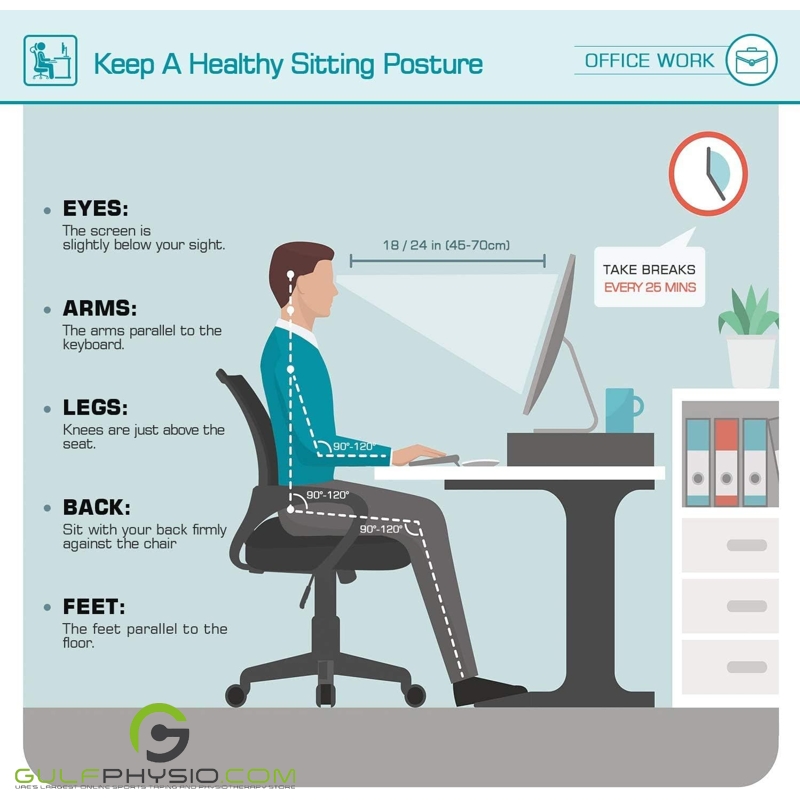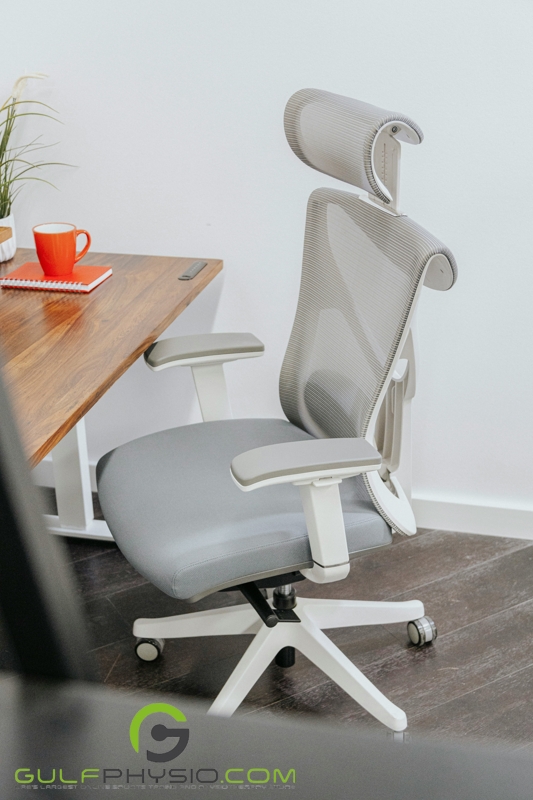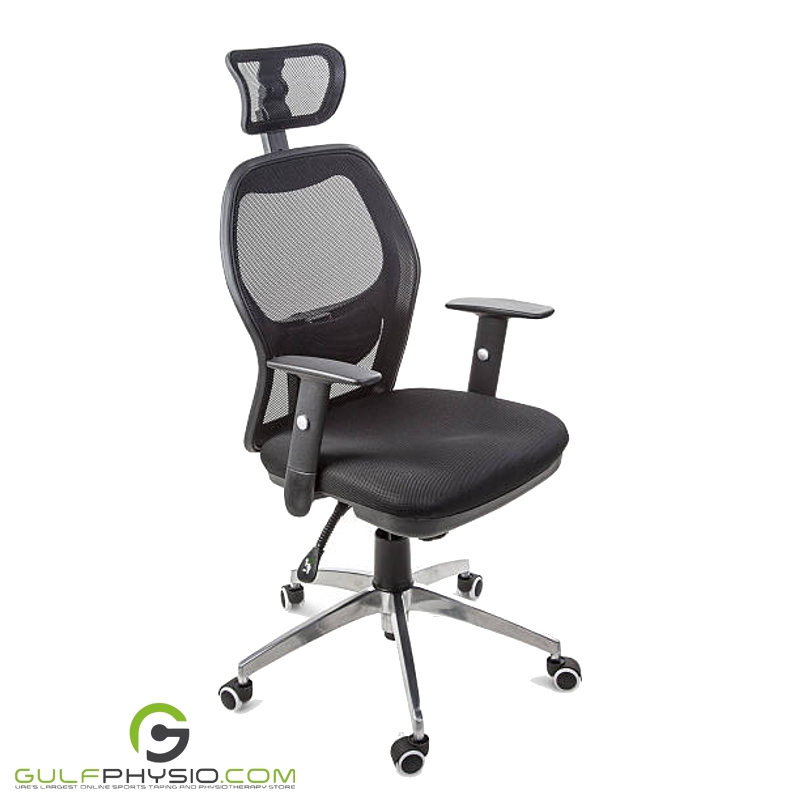
We discussed handling back pain from your office chair in a previous article. In this article, we will explore other habits you can adopt to avoid the aches and pains. Especially those that affect your health and posture while working at your desk all day.
The Burden of Back Pain
An article published in 2021 conducted a 30-year study (1990-2020) to determine the prevalence and risk factors of lower back pain. The study mentioned that lower back pain is the leading cause of “Years Lived with Disability” (YLD).

The research revealed that lower back pain affects 616 million individuals globally as of 2020. That number projected to rise significantly to approximately 843 million people by the year 2050. This study also revealed that “occupational ergonomic factors” caused close to a fourth of YLD’s due to lower back pain. Occupational ergonomic factors include sitting, standing, maintaining awkward postures, etc.
Posture and Back Pain
The World Health Organization (WHO) recognizes that lower back pain is the leading cause of disability globally. Having a myriad of risk factors which include: obesity, high physical work stress, underlying diseases (including cancer), tissue damage, etc.

Further studies have also linked lower back pain to disorders and conditions of the spine, affecting posture. A few of these postural abnormalities include Lordosis (Swayback), Kyphosis, and Scoliosis to name a few.
Preventing Poor Posture
There are several ways to avoid aches and pains that cause poor posture.
Proper Desk Sitting Position
The simplest way is by practicing proper sitting position while working at your desk.

- Set the chair height so that your knees are parallel to your hips or slightly below your hips, and your feet are flat on the ground.
- Keep your hips far back in the chair and sit up straight.
- Ensure the keyboard is in front of you and at arm’s reach.
- Position the monitor a few inches above eye level in front of you. This helps maintain a neutral and relaxed neck position.
- The distance between you and the computer screen should be at least 18-24 inches or arm’s length.
- Throughout the workday, let your shoulders drop and pay attention if you round them forward or rise toward your ears.
Adjusting Your Office Furniture
Another method to prevent poor posture and back pain while you’re at work is by adjusting the furniture you use.
Adjusting your office chair

- Stand in front of the chair and adjust the height so that the top of the backrest is right below your knees.
- Ensure your feet are firmly planted on the floor and settle back into the seat. Maintaining proper posture and the comfort of your lower back depends on having the right foot support. To correct your posture, you will need a footrest if your feet are not flat on the floor.
- Usually located on the right, the lever that adjusts the backrest angle has arrows pointing forward and backward. The ideal seating position when using an ergonomic desk is slightly upright. The backrest should offer an appealing relief for the back whether you’re reading off the computer, conversing, or attending virtual meetings.
- If an armrest prevents someone from sitting as close to the desk as they would like, it leads to bad posture. If the armrests are adjustable, make sure they fit beneath the desk. This guarantees that nothing will prevent you from working comfortably when sitting close.
Adjusting your desk

- Underneath your desk should be enough space for your legs and the armrests of your chair. If the armrests do not fit, remove them. If the armrests are not removable, adjust the height of the desk.
- The ideal height of your desk should have you seated at your desk with your arms rested at a 90-degree angle. The tabletop should be at the same level as your forearms. The same applies when using a standing desk.
Adjusting your computer monitor

- Make sure the top border of the screen is aligned with your eyes when adjusting the height of your monitor. You can maintain a neutral neck position with this height.
- With your head and torso upright and your back supported by your chair, you should sit comfortably away from the monitor so that you can read all of the text on the screen.
- The ideal viewing distance is often between 20 and 40 inches (50 and 100 cm), or roughly an arm’s length, from the eye to the front surface of the computer screen.
Adjusting wrist and hand posture

- Try to maintain a neutral wrist position when using a keyboard. Your hands should remain parallel to one another rather than angled outward (ulna deviation) or inward (radial deviation). This is because one side of the elbow or wrist is stretched by the in and out angles, while the other side is forced to exert more effort, which may lead to conditions such as tennis elbow, or golfer’s elbow.
- Maintaining a neutral wrist position helps ease the strain on the outside of the elbow (the side of the elbow that is highest while you type) as well as on the top and bottom of the wrists and fingers. This decrease in tension helps alleviate carpal tunnel syndrome (wrist discomfort) and tennis elbow symptoms. Maintaining the hand level above the keyboard is also crucial.
Using Ergonomic Office Furniture
The use of ergonomic furniture has become commonplace in office spaces as employee health and overall well-being become much-needed focal points of any healthy workplace
Ergonomic Desk Chairs

A study conducted in 2012 found that ergonomic seating improved musculoskeletal symptoms among workers who were required to sit for prolonged periods. So investing in a good ergonomic desk chair, that fits your needs is a great step towards avoiding aches and pains, and maintaining good posture.
Standing Desks

Harvard Health Publishing found that standing desks can reduce the risk of developing serious health conditions such as diabetes, cardiovascular disease, obesity, and cancer.
Ergonomic Keyboards

More recent developments in ergonomic furniture now include ergonomic computer equipment, such as keyboards. According to Accredited Rehabilitation Consultants, ergonomic keyboards have a myriad of benefits such as wrist support, good posture, and prevention of carpal tunnel syndrome among other things.
In Conclusion
The prevalence of back pain in the workplace has become more common in recent years, affecting more and more people annually. With this knowledge, efforts are being made to address the myriad of health concerns employees are susceptible to in the workplace.

Adjustments in one’s posture, work habits, office equipment, and adapting more ergonomic options may decrease the development of serious medical conditions for an individual who spends the majority of their work day seated at the office.
Want to learn more about health, pain management, and disease? Then read our articles “Beat Back Pain from Your Office Chair” and “How Do You Sleep?: The Correct Sleeping Posture and Positions”.
Disclaimer
GulfPhysio.com and all of its content are for informational purposes only. All information is believed to be accurate at the time of posting and should NOT be taken as professional medical advice. Please seek a medical professional in the event of pain or injury.



